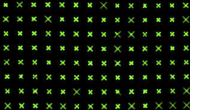
Newsletter Archive
2018 – 2008
February 2018
 Three faculty members elected to the NAE
Three faculty members elected to the NAE
| UCLA Samueli Engineering Congratulations to Ann Karagozian, Stanley Osher and Ali Sayed! UCLA Samueli now has 38 affiliated faculty members who have been elected to the National Academy of Engineering
 Is your personal data your currency?
Is your personal data your currency?
| NBC News “It demonstrates our inability to comprehend the consequences of what we’re sharing.” –Mani Srivastava of Electrical and Computer Engineering. Also in Science News
 Bill Walton visits Samueli Engineering
Bill Walton visits Samueli Engineering
| ESPN Bruin, NBA legend and ESPN sportscaster Bill Walton spoke for several minutes about his visit to Engineering during the UCLA-Oregon men’s basketball game.
 The coming V2G uptrend
The coming V2G uptrend
| Podcast: Renewable Energy World Rajit Gadh of SMERC breaks down the benefits of vehicle-to-grid (V2G) technology.
 A new app brings the doctor to you
A new app brings the doctor to you
| ABC News’ Nightline Nick Desai (MS ’92) discusses the merits of the doctor house call.
 Vint Cerf reflects on his optimism as an inventor
Vint Cerf reflects on his optimism as an inventor
| NPR “When you’re inventing something you should try to think about what the consequences might be.”— Vint Cerf (MS ’70, PhD ’72).

Drilling into the secrets of teeth
| Science News for Students “I want this research to motivate future explorers of the world.”—Dean Ho from Bioengineering
 The promise of FLECS
The promise of FLECS
| UCLA Newsroom FLECS, a new device from Dino Di Carlo of Bioengineering, could aid in new therapies for muscular dystrophy, hypertension and asthma. Also in Muscular Dystrophy News Today.
 Q&A with roboticist and Olympic torch relay runner Dennis Hong
Q&A with roboticist and Olympic torch relay runner Dennis Hong
| UCLA Newsroom “It was a historic moment. Prometheus gave fire to humans, human gives fire to robot.”—Dennis Hong of Mechanical and Aerospace Engineering
January 2018
 We’re teaching kids computer science
We’re teaching kids computer science
(without computers) | PC Mag The AI explosion means we’ll need to rethink the role of data scientists. Computer Science’s Miryung Kim might have the answer.

Alum Henry Samueli connects success, philanthropy | U.S. News & World Report “There was this huge need in the consumer world to get faster broadband and we had developed the technology at UCLA.” –Henry Samueli, co-founder and CTO of Broadcom
 Watch: Dean Murthy’s Q+A with Dr. Samueli
Watch: Dean Murthy’s Q+A with Dr. Samueli
| Speaker Series Video The Ronald and Valerie Sugar Distinguished Speaker Series welcomed Henry Samueli (BS ’75, MS ’76, PhD ’80) to share his UCLA experience with students.
 A semi-living stingray may one day fix your heart | Cosmos Created by Ali Khademhosseini of Bioengineering, the tissue-based soft robot (video) could lead to advances in bio-inspired robotics and regenerative medicine. Also in: TechCrunch, Engineering.com, Science Daily, and Phys.org.
A semi-living stingray may one day fix your heart | Cosmos Created by Ali Khademhosseini of Bioengineering, the tissue-based soft robot (video) could lead to advances in bio-inspired robotics and regenerative medicine. Also in: TechCrunch, Engineering.com, Science Daily, and Phys.org.
 We developed tech that goes behind the scenes of centuries-old art | Smithsonian “I have found this extremely interesting and amazing that we could achieve this knowledge without having to take any samples from the painting.” –Ioanna Kakoulli of Materials Science and Engineering
We developed tech that goes behind the scenes of centuries-old art | Smithsonian “I have found this extremely interesting and amazing that we could achieve this knowledge without having to take any samples from the painting.” –Ioanna Kakoulli of Materials Science and Engineering
 Could portable treatment centers fix rural America’s water problems? | Pacific Standard How can small communities across America cope with water shortages? Interview with Yoram Cohen of Chemical and Biomolecular Engineering.
Could portable treatment centers fix rural America’s water problems? | Pacific Standard How can small communities across America cope with water shortages? Interview with Yoram Cohen of Chemical and Biomolecular Engineering.
 Got the flu? We’re working on a more effective flu vaccine. | Infection Control Today Ren Sun of Bioengineering is using leading-edge genomics to identify and eliminate the virus’ defense mechanisms.
Got the flu? We’re working on a more effective flu vaccine. | Infection Control Today Ren Sun of Bioengineering is using leading-edge genomics to identify and eliminate the virus’ defense mechanisms.
